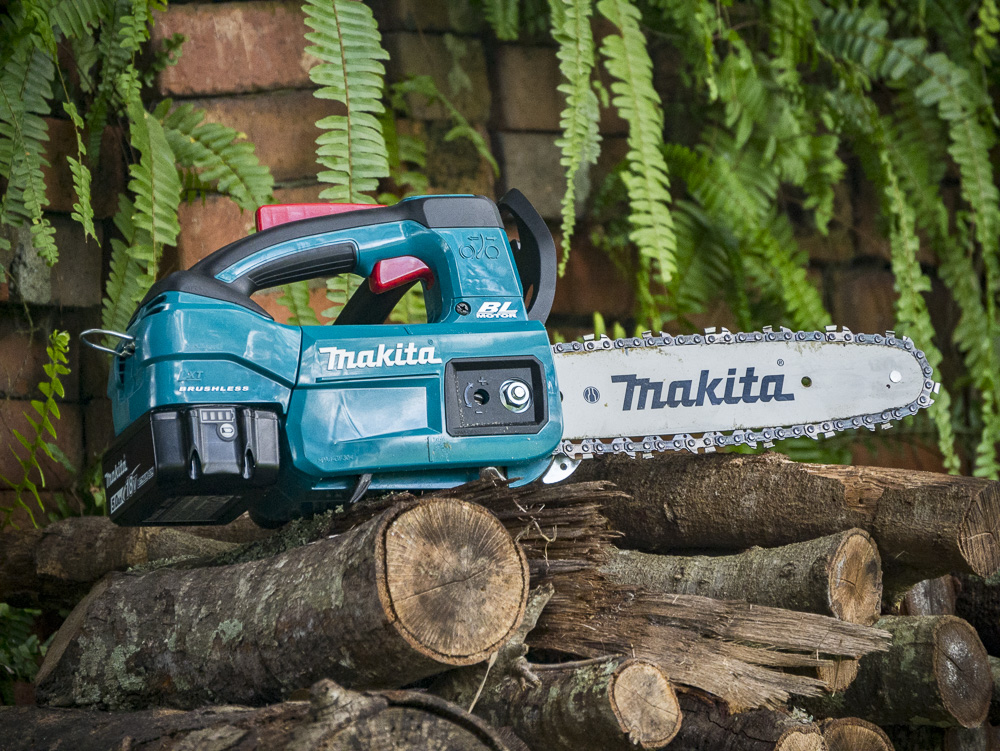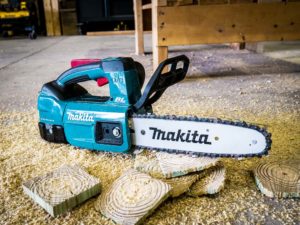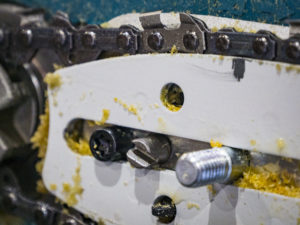When it comes to 2-cycle engines, lubrication is important. Without proper lubrication, the friction caused by your chainsaw chain moving across the guide bar causes excess heat and wear. This hot, metal-on-metal action damages the chain, the bar, and the engine. In fact, you can eventually break the whole chainsaw. Keeping that bar and chain properly oiled is critical. That’s why knowing how a chainsaw oiler works is so important.
Table of Contents
How Oiling Has Evolved
In the “olden days”, before modern advancements in chainsaw technology, the “chainsaw oiler” was a person (usually the new guy). His job revolved around operating the oil can. Basically, he got to manually drip oil onto the tool while the seasoned lumberjack worked away. This was generally his position until the older guy lopped off a vital body part, at which point, the young guy got promoted to working the saw.
Ah, the good ole days…
The next step in the evolution of the chainsaw oiler removed the assistant but still used a manual process. It involved an onboard thumb plunger next to the throttle, eliminating the need for a “chainsaw caddy.” This advancement in chainsaw oiling technology let the operator manually pump oil onto the bar while cutting. A few of these manual oilers are still in use today.
Eventually, manufacturers figured out how to work automatic oilers onto their chainsaws. These have proved to be a pretty reliable and effective solution. In fact, the automatic chainsaw oiler has let users adopt a more “set-it-and-forget-it” approach to keeping their equipment properly lubricated.
The Ins & Outs of How a Chainsaw Oiler Works
Most modern chainsaws use automatic oiler systems, but it helps to know how they work. Specially engineered chainsaw bar oil goes into the oil reservoir. You need to keep up with your oil levels as you cut since running out of oil can cause your saw to warp or burn out.
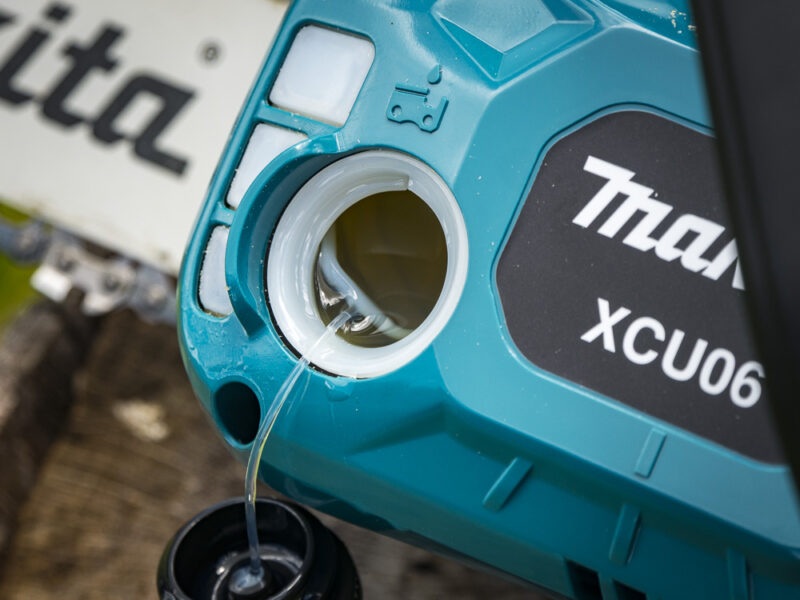
A lot of manufacturers now include helpful features like translucent windows for easily checking oil levels. Both gas and electric chainsaws require you use oil to lubricate the chain and bar. Regardless of which power supply you favor, topping off your oil when refueling or switching out batteries is a good habit to get into.
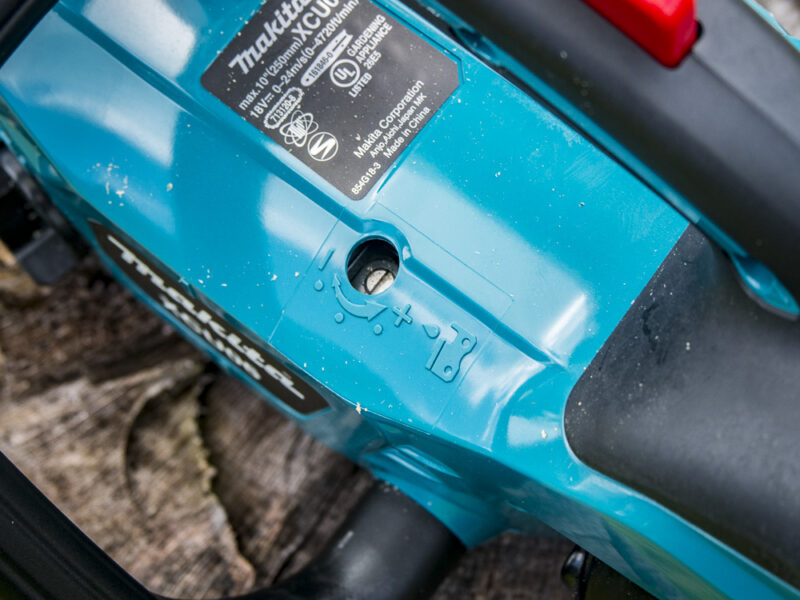
Fixed Flow vs Adjustable Flow Chainsaw Oiler Systems
Your chainsaw oiler likely works off either a fixed flow or adjustable flow oiling system. With a fixed-flow oiler, the chainsaw releases lubrication onto the bar at a constant rate. This system works ok, but it won’t let you adjust the oil release for temperature changes, harder wood, etc.
With an adjustable flow system, you can adjust the flow rate by turning a screw on the oil pump. This lets you account for all the above variables.
On these systems, the throttle simultaneously engages both the motor and the oil pump. As you throttle up, a worm drive engages the pump, sending oil through a port that releases onto the bar. As the chain moves across the bar, it distributes the oil across the surface, reducing the friction and the heat that occurs when cutting.
Related Content
- How to Tell If Your Chainsaw Bar is Worn Out
- Chainsaw Safety Tips for Green Pros
- Why You Should Flip to an Upside-Down Chainsaw Bar
Pro Tips for Keeping Your Chainsaw Bar Properly Oiled
Read up on the manufacturer’s recommendations for bar oil. Chainsaw oils have been specially designed for a specific viscosity, which ensures that it sticks to all the cutting parts. Generally, any bar and chain oil can be used, however. We even know one pro who uses vegetable oil which is biodegradable. It also helps in the decomposition of the wood chips that get covered with that oil.
Weather can also affect the viscosity of the chainsaw oil. Colder temperatures will thicken the oil up, while summer heat can thin it out. Oil that has become too thick or too thin can cause all sorts of problems that can shorten the lifespan of your bar, chain, and motor. If a manufacturer fails to specify what oil to use at any given temperature, we recommend that you use a grade SAE 30 in the summer and SAE 10 in the winter.
Before cutting anything, run your chainsaw with the tip pointed at the work surface, but without cutting. If the chain spits small amounts of oil onto the wood, you’ll know that your chainsaw oiler is functioning properly.
When you finish up with the saw, you should double-check the oil port to make sure no sawdust or other gunk has accumulated. If you notice any blockage, use a soft, dry rag to remove any crud.

Tangentially related to all this, your bar probably has rotating sprockets that guide the chain around the nose. “Greasing your nose,” in this case, refers to throwing some grease into the tiny hole at the nose of the bar, which should keep those sprockets moving smoothly.
Final Thoughts
More than a guide to buying any specific bar or chain oil, knowing how a chainsaw oiler works is more about maintenance. Keep the oil flowing to the bar and chain and you likely won’t run into any hassles down the road. You want to make sure that the chain runs smoothly on the bar so that you can focus on cutting and not on having to replace chains and bars prematurely.
As always, if you’ve got any other pro tips on how to keep your chainsaw oiler functioning properly, feel free to leave them in the comments section below!

